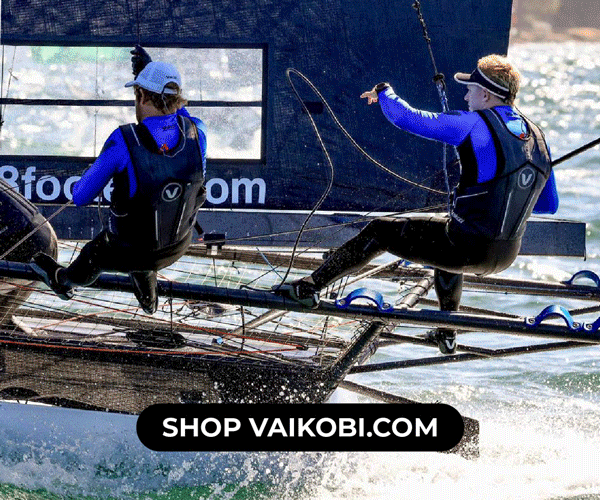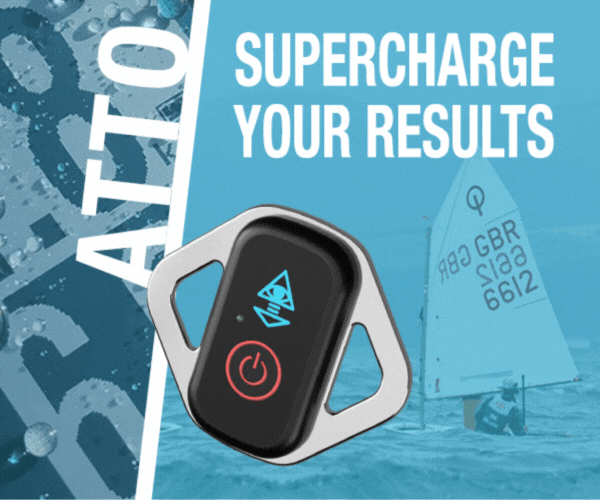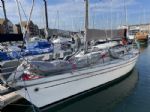












Boats for sale
| Laser 28 - Excellent example of this great design Hamble le rice |
 |
| Rossiter Pintail Mortagne sur Gironde, near Bordeaux |
 |
List classes of boat for sale |
Near collision whilst broaching |
Post Reply 
|
Page <12 |
| Author | |||
JimC 
Really should get out more 

Joined: 17 May 04 Location: United Kingdom Online Status: Offline Posts: 6661 |
 Post Options Post Options
 Quote Quote  Reply Reply
 Topic: Near collision whilst broaching Topic: Near collision whilst broachingPosted: 05 Aug 13 at 6:10pm |
||
Get thee to the definitions section of the rule book for gybe... But, especially when you get to bigger or more delicate boats, there are all sorts of things that can break if you have to crash gybe... For example I normally had 3mm or 4mm ply sidedecks on my Cherubs, and if you bashed it hard with an elbow or knee you could do damage. No problem with normal sailing, but although I never did it I can imagine if I had to crash gybe maybe I could slip and crunch, hole in the deck. In that case I reckon the damage would be entirely down to the boat that made me crash gybe, and heck, they can damn well pay up. Edited by JimC - 05 Aug 13 at 6:11pm |
|||
 |
|||
Lukepiewalker 
Really should get out more 

Joined: 24 May 06 Location: United Kingdom Online Status: Offline Posts: 1341 |
 Post Options Post Options
 Quote Quote  Reply Reply
 Posted: 05 Aug 13 at 9:02pm Posted: 05 Aug 13 at 9:02pm |
||
|
The fact that a boat required to keep clear is out of control does not entitle her to exoneration for breaking a rule of Part 2. When a right-of-way boat becomes obliged by rule 14 to ‘avoid contact . . . if reasonably possible’ and the only way to do so is to crash-gybe, she does not break the rule if she does not crash-gybe.
Edited by Lukepiewalker - 05 Aug 13 at 9:03pm |
|||
|
Ex-Finn GBR533 "Pie Hard"
Ex-National 12 3253 "Seawitch" Ex-National 12 2961 "Curved Air" Ex-Mirror 59096 "Voodoo Chile" |
|||
 |
|||
Brass 
Really should get out more 
Joined: 24 Mar 08 Location: Australia Online Status: Offline Posts: 1151 |
 Post Options Post Options
 Quote Quote  Reply Reply
 Posted: 06 Aug 13 at 2:51am Posted: 06 Aug 13 at 2:51am |
||
Fair darts Jim, You'll look for a long time to find 'tacking' or 'gybing' in the definitions. They went in 1995. Their meanings are now their common English, or nautical meanings. What matters, for the purposes of the rules is what tack a boat is on (at any instant): to get to this we look at the definition of Tack, Starboard or Port, which takes us back to the definition of Leeward and Windward, which talks about 'the side on which her mainsail lies'. Right of way transitions in tacks are 'buffered' by rule 13 While Tacking. Transitions in gybes are instantaneous (except in Match Racing). You can tell when the gybe is complete, but not when it starts. Edited by Brass - 06 Aug 13 at 2:55am |
|||
 |
|||
Brass 
Really should get out more 
Joined: 24 Mar 08 Location: Australia Online Status: Offline Posts: 1151 |
 Post Options Post Options
 Quote Quote  Reply Reply
 Posted: 06 Aug 13 at 3:07am Posted: 06 Aug 13 at 3:07am |
||
Case 110 ...Contact is not necessary for one boat to cause injury or physical damage to another. ... Question 2 Must contact between the boats occur in order for redress to be granted under rule 62.1(b)? Answer 2 No. A boat that suffers injury to a member of her crew or physical damage while acting to avoid contact with a boat that has broken a rule of Part 2 may be entitled to redress if the injury or damage is found to have made her score significantly worse and was not her fault. Damage to a kite can happen pretty easily in an involuntary gybe: pole and a foot or so of the kite tack digs in the water, loads up big time and the kite lets go around the tack reinforcing. The pole then then bends L shaped around the leeward shrouds, for bonus points taking them out on the way. Likewise, boat bucketing around through the gybe, bow heroically manages to get the pole off, only to stick it right through the kite, or simply that your light kite that you have been nursing on the dead run just explodes or flogs itself to death when you round up into the broach. Sure a genius helmsman might have kept it under control better, but as I said, I'd have no difficulty saying the other boat 'caused' the damage. |
|||
 |
|||
Hitcher 
Newbie 
Joined: 21 Dec 10 Online Status: Offline Posts: 38 |
 Post Options Post Options
 Quote Quote  Reply Reply
 Posted: 18 Aug 13 at 11:00pm Posted: 18 Aug 13 at 11:00pm |
||
I'm not sure I can think of a situation where the rules ever need to know when a gybe starts though? As you say, a gybe is instantaneous, so it starts the instant before the boat is on the new tack and the gybe completed. So in this case the boat is on port and bearing away at a RoW leeward boat until the moment it is on starboard aiming at it and out of control.
|
|||
 |
|||
gordon 
Really should get out more 
Joined: 07 Sep 04 Online Status: Offline Posts: 1037 |
 Post Options Post Options
 Quote Quote  Reply Reply
 Posted: 20 Aug 13 at 12:30pm Posted: 20 Aug 13 at 12:30pm |
||
|
Another formulation:
If a boat is obliged to perform an unseamanlike manouevre by a another boat that should keep clear or give room then the relevant rule has been broken. If in the course of the unseamanlike manoeuvre a boat suffers damage or injury tihen the appropriate penalty for the infringing boat is to retire as soon as she becomes aware of the damage. When is a gybe unseamalike - probably when it has to be performed immediately, without the normal (for the boat) preparation. |
|||
|
Gordon
|
|||
 |
|||
Post Reply 
|
Page <12 |
| Forum Jump | Forum Permissions  You cannot post new topics in this forum You cannot reply to topics in this forum You cannot delete your posts in this forum You cannot edit your posts in this forum You cannot create polls in this forum You cannot vote in polls in this forum |
Bulletin Board Software by Web Wiz Forums® version 9.665y
Copyright ©2001-2010 Web Wiz
Change your personal settings, or read our privacy policy
Copyright ©2001-2010 Web Wiz
Change your personal settings, or read our privacy policy











 Printable Version
Printable Version Delicious
Delicious Digg
Digg Facebook
Facebook Furl
Furl Google
Google MySpace
MySpace Newsvine
Newsvine reddit
reddit StumbleUpon
StumbleUpon Twitter
Twitter Windows Live
Windows Live Yahoo Bookmarks
Yahoo Bookmarks Topic Options
Topic Options